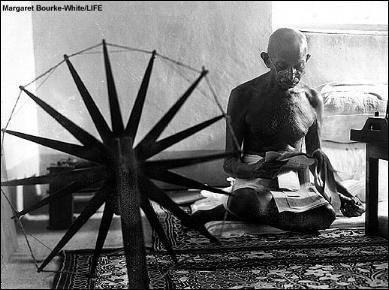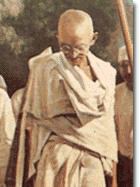|
|||

Life in India |
With Indians doing slave labor for the British and the British imposing unfair laws on the Indians, Gandhi decided to do something about it. Gandhi called for protests and urged his friends to keep their protests peaceful. Gandhi then decided to revolt against one of the laws he considered worse than others. The salt law made it a “punishable crime for Indians to make their own salt or possess salt not purchased from factories run by the English government." He organized a salt march where about seventy-five Indians marched behind Gandhi for about 200 miles, and hundreds of people joined in. Then at the climax of the journey, Gandhi went onto the beach and picked up a few grains of sand left by the sea. He had broken an English rule that said they could not own salt that they hadn’t bought from England. “It was a simple act, but it symbolized the defiance of hundreds of millions of Indians against the world’s strongest colonial power.” This simple act of insolence inspired many Indians to protest non-violently. They began to illegally take salt but were beaten down by the British. So Gandhi called a protest march to the Salt Works, but when police heard about this they immediately threw Gandhi in jail. His followers carried out his plan and marched to the Salt Works, where 200 British officers were waiting for them. In groups of twenty-five, they marched up to the British and were beaten down. All 2500 of them were beaten and Gandhi was happy. He was happy because they had not fought back, and his philosophy of Satyagraha had worked perfectly. This violent British rage against the peaceful Indians spread worldwide.
|
|
|


